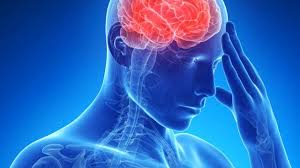Chronic pain results from disease or trauma to the nervous system. Damaged nerve fibres with heightened responses to normal stimuli send incorrect messages to pain centres in the brain. This phenomenon, called “peripheral and central sensitization” is one of the key mechanisms involved in the condition which touches people with diabetes, cancer, and those suffering from multiple sclerosis, among others.
The study provides insights into the role of the hyperpolarization-activated cyclic nucleotide-gated (HCN) channels, which control the transmission of pain signals to a particular region of the brain, the anterior cingular cortex (ACC), identified as the most consistently stimulated region in pain processing.
“We were able to show that reducing hyperexcitability of the ACC by blocking the HCN channels had analgesic effects — basically the feelings of pain were dramatically decreased. Our study has revealed one important mechanism linking chronic pain to abnormal activity of the ACC and it provides a cellular and molecular explanation for the overstimulation of neurons in the prefrontal cortex. This gives us new perspectives on therapeutic strategies that could target the HCN channels to help relieve chronic pain,” says Dr. Philippe Séguéla, Professor and senior author of the study.
Recent neuroimaging studies investigating the role of the prefrontal regions of the brain in neuropathic pain have shown how emotional, psychological and cognitive factors can influence pain perception.
“The ACC has been shown to be a key centre to cognitive functions linked to memory and affective functions involved in feelings and emotions. We know that patients who suffer from chronic pain experience impairment of their working memory, difficulties focusing on certain tasks and may suffer from depression and anxiety. Our findings open new doors to research possible treatment of these debilitating symptoms that are linked to chronic pain.” says Dr. Séguéla.
Source: Science Daily
N.H.Khider

